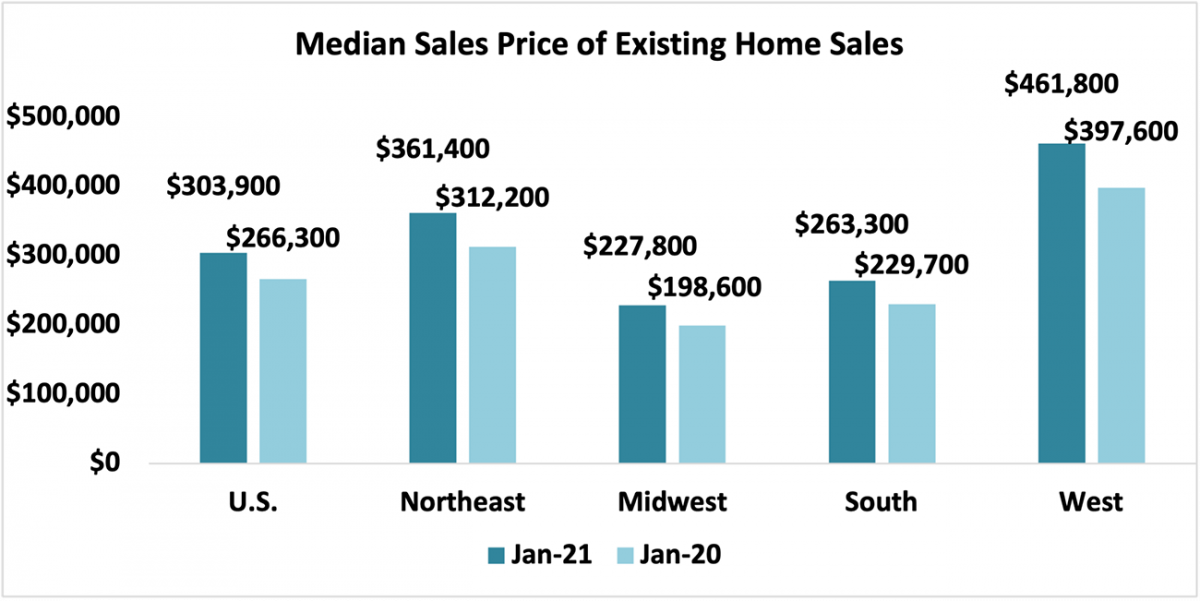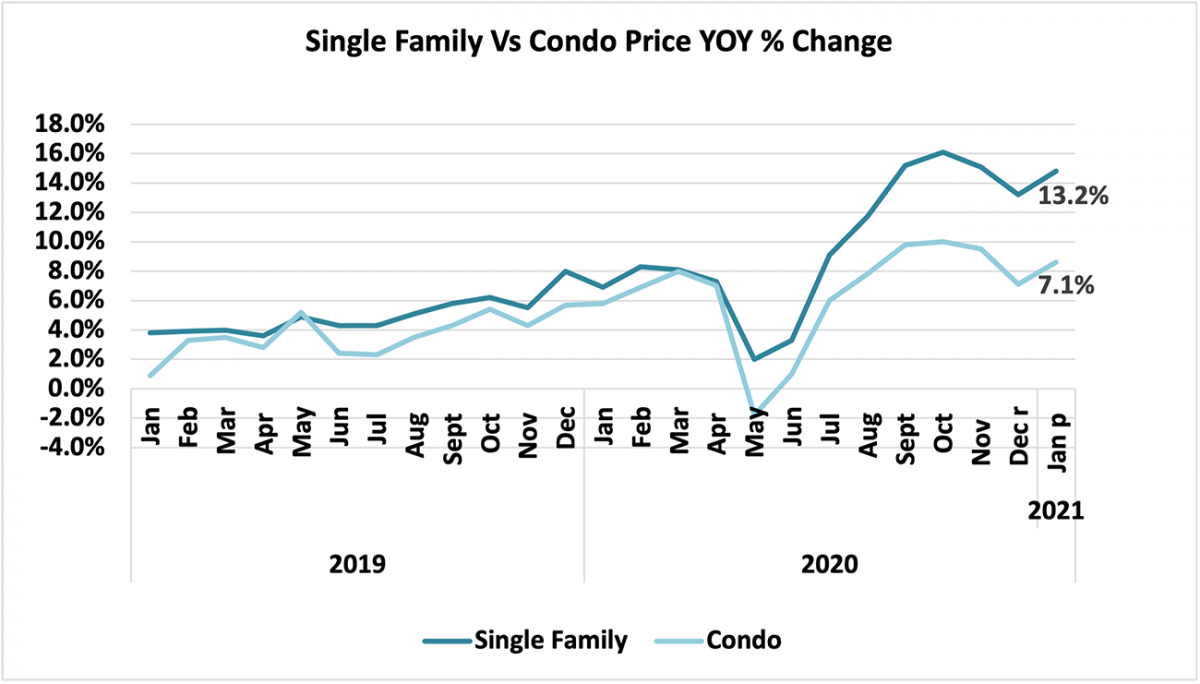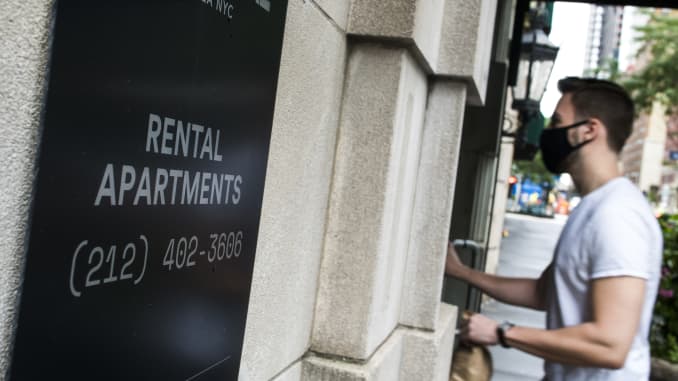Existing-home sales sagged for the sixth straight month in July, according to the National Association of REALTORS®. All four major U.S. regions recorded month-over-month and year-over-year sales declines.
Total existing-home sales,1 https://www.nar.realtor/existing-home-sales, completed transactions that include single-family homes, townhomes, condominiums and co-ops, slipped 5.9% from June to a seasonally adjusted annual rate of 4.81 million in July. Year-over-year, sales fell 20.2% (6.03 million in July 2021).
“The ongoing sales decline reflects the impact of the mortgage rate peak of 6% in early June,” said NAR Chief Economist Lawrence Yun. “Home sales may soon stabilize since mortgage rates have fallen to near 5%, thereby giving an additional boost of purchasing power to home buyers.”
Total housing inventory2 registered at the end of July was 1,310,000 units, an increase of 4.8% from June and unchanged from the previous year. Unsold inventory sits at a 3.3-month supply at the current sales pace, up from 2.9 months in June and 2.6 months in July 2021.
The median existing-home price3 for all housing types in July was $403,800, up 10.8% from July 2021 ($364,600), as prices increased in all regions. This marks 125 consecutive months of year-over-year increases, the longest-running streak on record.
“We’re witnessing a housing recession in terms of declining home sales and home building,” Yun added. “However, it’s not a recession in home prices. Inventory remains tight and prices continue to rise nationally with nearly 40% of homes still commanding the full list price.”
Properties typically remained on the market for 14 days in July, the same as in June and down from 17 days in July 2021. The 14 days on market are the fewest since NAR began tracking it in May 2011. Eighty-two percent of homes sold in July 2022 were on the market for less than a month.
First-time buyers were responsible for 29% of sales in July, down from 30% in June and also in July 2021. NAR’s 2021 Profile of Home Buyers and Sellers – released in late 20214 – reported that the annual share of first-time buyers was 34%.
All-cash sales accounted for 24% of transactions in July, down from 25% in June, but up from 23% in July 2021.
Individual investors or second-home buyers, who make up many cash sales, purchased 14% of homes in July, down from 16% in June and 15% in July 2021.
Distressed sales5 – foreclosures and short sales – represented approximately 1% of sales in July, essentially unchanged from June 2022 and July 2021.
According to Freddie Mac, the average commitment rate (link is external)for a 30-year, conventional, fixed-rate mortgage was 5.41% in July, down from 5.52% in June. The average commitment rate across all of 2021 was 2.96%.
Realtor.com®’s Market Trends Report(link is external) in July shows that the largest year-over-year median list price growth occurred in Miami (+36.2%), Memphis (+32.7%) and Orlando (+28.4%). Phoenix reported the highest increase in the share of homes that had their prices reduced compared to last year (+31.8 percentage points), followed by Las Vegas (+28.6 percentage points) and Austin (+27.8 percentage points).
Single-family and Condo/Co-op Sales
Single-family home sales declined to a seasonally adjusted annual rate of 4.31 million in July, down 5.5% from 4.56 million in June and down 19.0% from one year ago. The median existing single-family home price was $410,600 in July, up 10.6% from July 2021.
Existing condominium and co-op sales were recorded at a seasonally adjusted annual rate of 500,000 units in July, down 9.1% from June and down 29.6% from one year ago. The median existing condo price was $345,000 in July, an annual increase of 9.9%.
“Buying a home remains a worthwhile investment that brings an unmatched combination of security, freedom and accomplishment associated with the American Dream,” said NAR President Leslie Rouda Smith, a REALTOR® from Plano, Texas, and a broker associate at Dave Perry-Miller Real Estate in Dallas. “REALTORS® serve as consumer champions who provide trusted guidance and insight to help home buyers and sellers achieve their goals.”
Regional Breakdown
Existing-home sales in the Northeast slid to an annual rate of 620,000 in July, down 7.5% from June and 16.2% from July 2021. The median price in the Northeast was $444,000, an increase of 8.1% from the previous year.
Existing-home sales in the Midwest declined 3.3% from the prior month to an annual rate of 1,190,000 in July, dropping 14.4% from July 2021. The median price in the Midwest was $293,300, up 7.0% from the previous year.
Existing-home sales in the South waned 5.3% in July to an annual rate of 2,130,000, down 19.6% from one year ago. The median price in the South was $365,200, an increase of 14.7% from July 2021.
Existing-home sales in the West retracted 9.4% compared to last month to an annual rate of 870,000 in July, down 30.4% from this time last year. The median price in the West was $614,900, an 8.1% jump from July 2021.
“The action is in the pricey West region which experienced the sharpest sales decline combined with a sizable inventory increase,” Yun said. “It’s likely some Western markets will see prices decline, and that will be welcome news for buyers who watched rapid price jumps during the past two years.”
The National Association of REALTORS® is America’s largest trade association, representing more than 1.5 million members involved in all aspects of the residential and commercial real estate industries.
# # #
For local information, please contact the local association of REALTORS® for data from local multiple listing services (MLS). Local MLS data is the most accurate source of sales and price information in specific areas, although there may be differences in reporting methodology.
NOTE: NAR’s Pending Home Sales Index for July is scheduled for release on August 24, and Existing-Home Sales for August will be released on September 21. Release times are 10 a.m. Eastern.
1 Existing-home sales, which include single-family, townhomes, condominiums and co-ops, are based on transaction closings from Multiple Listing Services. Changes in sales trends outside of MLSs are not captured in the monthly series. NAR benchmarks home sales periodically using other sources to assess overall home sales trends, including sales not reported by MLSs.
Existing-home sales, based on closings, differ from the U.S. Census Bureau’s series on new single-family home sales, which are based on contracts or the acceptance of a deposit. Because of these differences, it is not uncommon for each series to move in different directions in the same month. In addition, existing-home sales, which account for more than 90% of total home sales, are based on a much larger data sample – about 40% of multiple listing service data each month – and typically are not subject to large prior-month revisions.
The annual rate for a particular month represents what the total number of actual sales for a year would be if the relative pace for that month were maintained for 12 consecutive months. Seasonally adjusted annual rates are used in reporting monthly data to factor out seasonal variations in resale activity. For example, home sales volume is normally higher in the summer than in the winter, primarily because of differences in the weather and family buying patterns. However, seasonal factors cannot compensate for abnormal weather patterns.
Single-family data collection began monthly in 1968, while condo data collection began quarterly in 1981; the series were combined in 1999 when monthly collection of condo data began. Prior to this period, single-family homes accounted for more than nine out of 10 purchases. Historic comparisons for total home sales prior to 1999 are based on monthly single-family sales, combined with the corresponding quarterly sales rate for condos.
2 Total inventory and month’s supply data are available back through 1999, while single-family inventory and month’s supply are available back to 1982 (prior to 1999, single-family sales accounted for more than 90% of transactions and condos were measured only on a quarterly basis).
3 The median price is where half sold for more and half sold for less; medians are more typical of market conditions than average prices, which are skewed higher by a relatively small share of upper-end transactions. The only valid comparisons for median prices are with the same period a year earlier due to seasonality in buying patterns. Month-to-month comparisons do not compensate for seasonal changes, especially for the timing of family buying patterns. Changes in the composition of sales can distort median price data. Year-ago median and mean prices sometimes are revised in an automated process if additional data is received.
The national median condo/co-op price often is higher than the median single-family home price because condos are concentrated in higher-cost housing markets. However, in a given area, single-family homes typically sell for more than condos as seen in NAR’s quarterly metro area price reports.
4 Survey results represent owner-occupants and differ from separately reported monthly findings from NAR’s REALTORS® Confidence Index, which include all types of buyers. The annual study only represents primary residence purchases, and does not include investor and vacation home buyers. Results include both new and existing homes.
5 Distressed sales (foreclosures and short sales), days on market, first-time buyers, all-cash transactions and investors are from a monthly survey for the NAR’s REALTORS® Confidence Index, posted at
read more…








